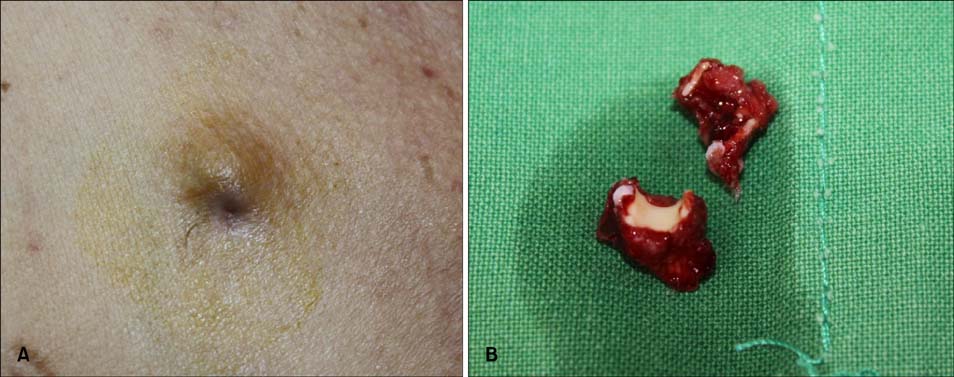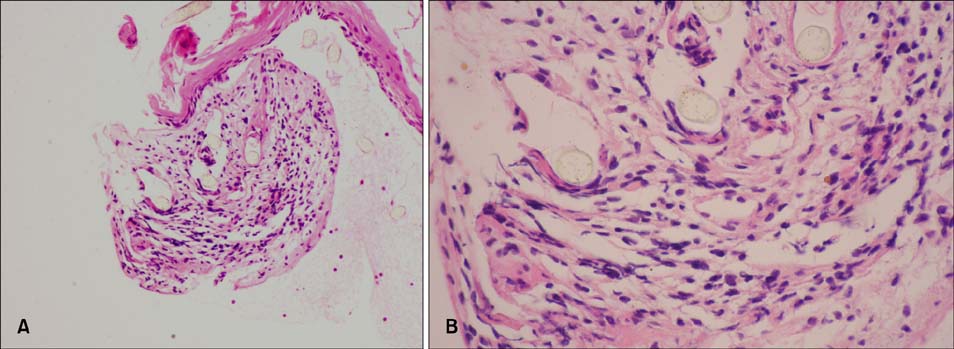Ann Dermatol.
2014 Dec;26(6):781-783. 10.5021/ad.2014.26.6.781.
Foreign Body Reaction due to a Retained Cuff from a Central Venous Catheter
- Affiliations
-
- 1Department of Dermatology, Incheon St. Mary's Hospital, College of Medicine, The Catholic University of Korea, Incheon, Korea. leejd@olmh.cuk.ac.kr
- KMID: 2264887
- DOI: http://doi.org/10.5021/ad.2014.26.6.781
Abstract
- No abstract available.
Figure
Reference
-
1. Burns T, Breathnach S, Cox N, Griffths C. Rook's textbook of dermatology. 8th ed. New Jersey: Wiley-Blackwell;2010. p. 1265–1266.2. Barnacle AM, Mitchell AW. Technical report: use of ultrasound guidance in the removal of tunnelled venous access catheter cuffs. Br J Radiol. 2005; 78:147–149.
Article3. Kohli MD, Trerotola SO, Namyslowski J, Stecker MS, McLennan G, Patel NH, et al. Outcome of polyester cuff retention following traction removal of tunneled central venous catheters. Radiology. 2001; 219:651–654.
Article4. Huang BK, Hubeny CM, Dogra VS. Sonographic appearance of a retained tunneled catheter cuff causing a foreign body reaction. J Ultrasound Med. 2009; 28:245–248.
Article5. Baek JH, Chun JH, Kim HS, Lee JY, Kim HO, Park YM. Two cases of facial foreign body granuloma induced by needle-embedding therapy. Korean J Dermatol. 2011; 49:72–75.
- Full Text Links
- Actions
-
Cited
- CITED
-
- Close
- Share
- Similar articles
-
- Radiologic Interventional Retrieval of Retained Central Venous Catheter Fragment in Prematurity: Case Report
- Percutaneous transluminal retrieval of intravascular iatrogenic foreign body by loop-snare technique
- An Unrecognized Foreign Body Retained in the Calcaneus: A Case Report
- Noninfectious Endophthalmitis Caused by an Intraocular Foreign Body Retained for 16 Years
- Malposition of a Subclavian Catheter in the Internal Jugular Vein Due to the Direction of a J-type Guidewire End



